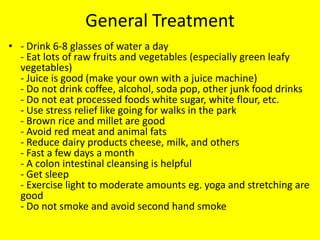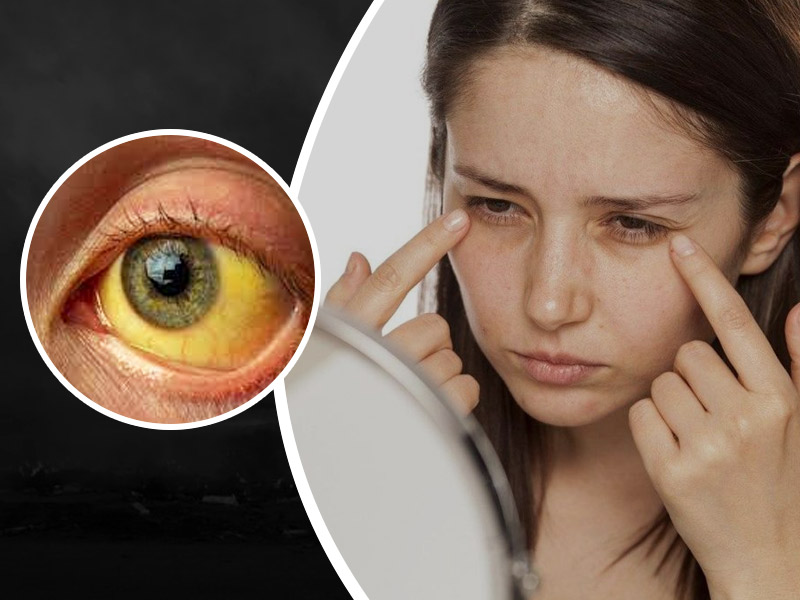Jaundice is a condition where your skin, the whites of your eyes and mucous membranes (like the inside of your nose and mouth) turn yellow. Many medical conditions can cause jaundice, like hepatitis, gallstones and tumors. Jaundice usually clears up once your healthcare provider treats your main medical condition.
Jaundice (hyperbilirubinemia) is when your skin, sclera (whites of your eyes) and mucous membranes turn yellow. Jaundice occurs when your liver is unable to process bilirubin (a yellow substance made when red blood cells break down) in your blood. This can either be caused by too much red blood cell breakdown or liver injury.
How jaundice develops:
Red blood cell breakdown: Your body regularly breaks down old red blood cells and replaces them with new ones. This breakdown process makes bilirubin.
Bilirubin processing: n Normally, your liver processes bilirubin, making it a part of bile (a bitter, greenish-brown fluid that helps digest food). Your liver then releases the bile into your digestive system.
Too much bilirubin: Jaundice happens when your liver can’t process all the bilirubin your body makes, or if your liver has a problem releasing bilirubin.
Yellow color: When there’s too much bilirubin in your blood, it starts to leak into tissues around your blood vessels. This leaking bilirubin makes your skin and the whites of your eyes yellow. This yellow color is a common sign of jaundice.
Causes of jaundice:
Jaundice occurs when there is too much bilirubin in the blood, which can be caused by many conditions, including:
Liver disease:
Hepatitis A, B, C, D, and E, as well as other viral infections, can cause liver inflammation and jaundice. Other liver diseases include cirrhosis, which is when scar tissue replaces normal liver tissue.
Gallbladder or bile duct issues:
Gallstones or other conditions can block the bile ducts, preventing bilirubin from being passed out of the body.
Blood disorders:
Hemolytic disorders, such as sickle cell anemia, can cause jaundice.
Medications:
Some drugs, such as acetaminophen, oral contraceptives, and penicillin, can cause jaundice as a side effect.
Birth defects:
Some genetic disorders, such as Gilbert syndrome, Dubin-Johnson syndrome, Rotor syndrome, or Crigler-Najjar syndrome, can cause jaundice.
Other conditions
Jaundice can also be caused by cancer of the pancreas or bile ducts, autoimmune disorders, or endocrine disorders like hypothyroidism.
Jaundice is characterized by yellowing of the skin, the whites of the eyes, and mucous membranes.
Symptoms of jaundice:
Denly or develop slowly over time. Symptoms include:
- Skin and eyes: Yellowing of the skin, the whites of the eyes, or the inside of the mouth. In more severe cases, these areas may look brown.
- Urine: Dark or brown-colored urine.
- Stools: Pale or clay-colored stools.
- Itching: Itching (pruritis) usually occurs with jaundice.
- Other symptoms: Fever, chills, pain in your belly, flu-like symptoms, being tired or confused, weight loss, vomiting, throwing up blood, a tendency to bruise or bleed easily.Jaundice usually clears up once your healthcare provider treats your main medical condition. There’s no specific treatment for jaundice. However, if you experience other accompanying signs and symptoms of jaundice, you should seek immediate medical attention.

Treatment of jaundice:
In adults, jaundice itself usually isn’t treated. But your doctor will treat the condition that’s causing it.
If you have acute viral hepatitis, jaundice will go away on its own as your liver heals. If a blocked bile duct is to blame, your doctor may suggest surgery to open it. If your skin is itching, your doctor can prescribe cholestyramine to be taken by mouth. This medication is used to remove bile acids from your body, which cause itching.





